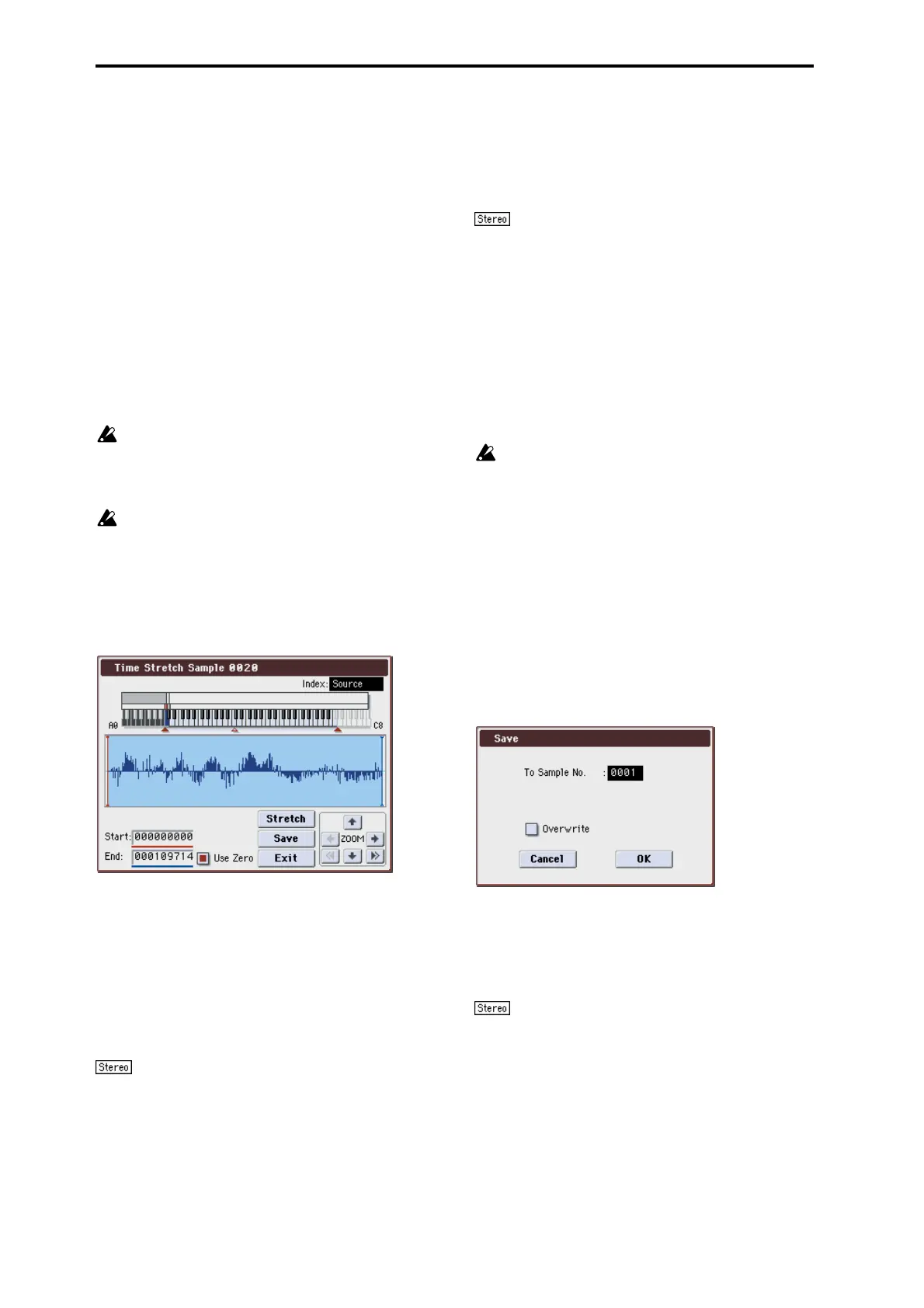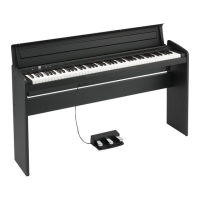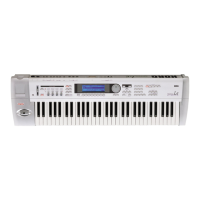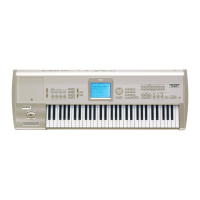Sampling mode
348
Source BPM will indicate the playback BPM value at the
original key. This BPM value is automatically calculated
according to the length from the start address to the end
address (if loop is off) or from the loop start address to the
end address (if loop is on). If you already know the BPM
value and the calculated value is incorrect, change it to the
correct value.
Use New BPM to specify the BPM value of the sample you
wish to create. Ratio will automatically be calculated from
the Source BPM and New BPM values.
For example if you have a one-measure 120 BPM sample in
4/4 time, and would like to change it to 150 BPM, you
would set Beat to 4. The Source BPM will be calculated
automatically. If the Source BPM is not calculated as 120.00
due to inaccuracies in the start address (or loop start
address) or end address, adjust Source BPM to the correct
value of 120.00.
Next, set New BPM to 150.00. The Ratio will be calculated
automatically.
It is not possible to make settings that would cause
Source BPM or New BPM to exceed the range of 40.00–
600.00.
It is not possible to make settings that would cause
Ratio to exceed the range of 50.00–200.00.
Depending on the sample, the length may not be
exactly as you specify, due to limitations in processing
accuracy.
7. To execute the Time Stretch operation, press the OK
button. To cancel without executing, press the Cancel
button.
When you press the OK button, the Time Stretch dialog box
will appear.
8. Audition the sample that was created by Time Stretch.
The sample before being time-stretched is assigned to the C2
note of the keyboard, and the sample that was time-
stretched is assigned to C#2. You can change the Index to
check the waveform.
Keyboard & Index: This shows the multisample that is used
temporarily in this dialog box.
When you play the keyboard, this multisample will sound.
It will behave just as in normal pages (e.g., the Recording
page). (0–1a)
In the case of a stereo sample, a stereo multisample
will be used temporarily. The sample at each index will
sound in stereo.
Index [Source, Result]:
Selects the index for the sample whose waveform you wish
to display.
If you select Source, the original waveform before time-
stretching will be selected.
If you select Result, the time-stretched sample will be
selected.
You can also select the index by holding down the ENTER
switch and pressing a note on the keyboard. The index that
includes that note will be selected.
Sample waveform display: This shows the waveform of the
selected sample. As in P2: Loop Edit, the Start, Loop S, and
End addresses are shown by a solid line.
In the case of a stereo sample, the L channel sample
data will be displayed above, and the R channel data below.
ZOOM: This controls horizontal and vertical zoom in/out
for the waveform shown in the “Sample waveform display.”
(1–1e)
Start:
End:
Specify the start address and end address of the sample for
the currently selected index.
When you execute Time Stretch, the addresses will be
specified automatically, but the playback may be slightly
skewed due to inaccuracies in the end address, etc. If this
occurs, you can correct the addresses manually.
When you change the start address, the loop start
address will also be changed simultaneously. If you
wish to independently adjust the start address and loop
start address, save the data in step 10, and then make
settings in the P2: Loop Edit page.
To audition the sound in the specified range, play the
keyboard or press the SAMPLING START/STOP switch.
When you press the SAMPLING START/STOP switch, the
sample in the range specified by “Start” and “End” will
sound at the original key.
Use Zero: (2–1d)
9. If you press the Stretch button, the Time Stretch dialog
box will appear, and you can re-do the time stretch once
again. Execute Time Stretch as described in step 6.
10.Save the sample that you created. Press the Save but-
ton, and the Save dialog box will appear.
In To Sample No., specify the save destination sample
number. By default, an unused sample number will be
selected.
The sample number cannot be specified if “Overwrite” is
checked. For more information, please see “About
“Overwrite”” on page 329.
For stereo samples, use “Save to No.(L)” and “(R)” to
specify the save-destination of the L and R channels.
To execute the Save operation, press the OK button. To
cancel without saving press the Cancel button.
11. By repeating steps 9–10 you can create more samples as
desired.
12.Press the Exit button to exit the Time Stretch operation.
The index will specify the last-saved sample number.
Note: If you to use the saved sample in Program mode or
Sequencer mode, you can use the Convert MS To Program
(Convert Multisample To Program) menu command, or
you can select that multisample for the “2–1a: OSC1
Multisample” (see page 37) or “2–3: OSC2 Basic” (see

